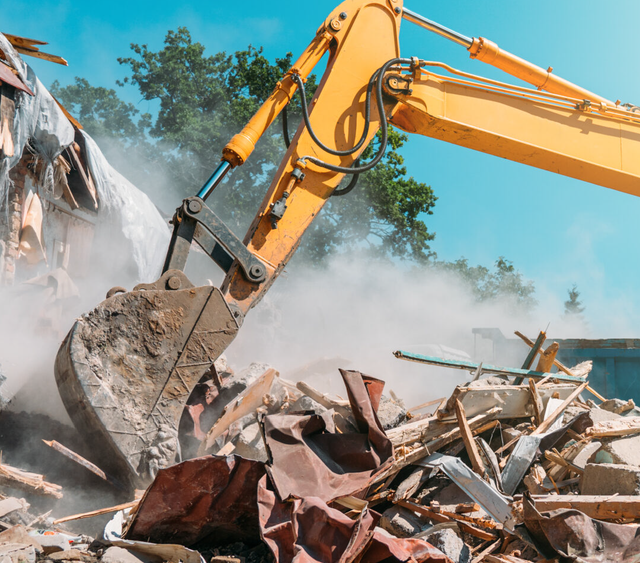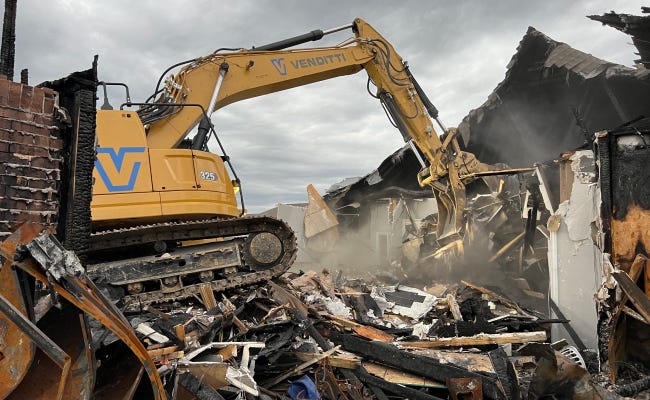The Ultimate Guide to Inside Demolition Techniques and Tools
Within the realm of indoor renovations, the art of demolition is an essential phase that requires precision, ability, and the right collection of tools. Whether you are a seasoned professional or a DIY lover, recognizing the details of interior demolition strategies can make all the distinction in accomplishing an effective project outcome.
Crucial Indoor Demolition Devices
When undertaking interior demolition tasks, having the ideal devices is necessary for performance and safety and security. Among the most critical tools for indoor demolition is the demolition hammer. This heavy-duty tool is created to break with tough products like drywall, floor tile, and concrete. Its effective hammering action can rapidly knock down walls, floorings, and various other structures. In addition, a crowbar is important for getting rid of fixtures, trim, and various other materials. Its take advantage of permits the simple extraction of nails and other bolts without damaging the surrounding surfaces - interior demolition.
One more vital device is a reciprocating saw, which is excellent for puncturing a range of materials such as timber, plastic, and steel. Its capability to make exact cuts in limited rooms makes it perfect for demolition work. Moreover, an utility knife is required for cutting products like carpeting, vinyl flooring, and insulation. Its sharp blade makes sure tidy and accurate cuts, facilitating the removal of unwanted products. Overall, having these crucial interior demolition devices will considerably improve the performance and security of any kind of demolition job.

Security Precautions During Demolition

Furthermore, all workers involved in the demolition procedure need to receive sufficient training on the correct handling of devices and devices to minimize mishaps. It is necessary to safeguard the workspace by erecting barriers and indicators to stop unapproved access - interior demolition. Routinely inspecting and preserving tools and tools can also add to a much safer working setting. By adhering to these safety precautions, interior demolition jobs can be brought out effectively while prioritizing the health of all individuals included.
Techniques for Removing Wall Surfaces
Implementing appropriate safety and security preventative measures during interior demolition jobs is vital for producing a safe and secure functioning environment, and one essential element of such projects includes understanding strategies for removing wall surfaces. One frequently made use of method is hand-operated demolition, which requires making use of standard hand devices such as sledgehammers, crowbars, and energy knives to very carefully take apart the wall item by piece. This method enables for better control over the demolition process, specifically in delicate areas where precision is necessary.
For bigger, a lot more complex walls, mechanical demolition may be necessary. This involves making use of heavy machinery like bulldozers or excavators to tear down walls successfully. However, it is crucial to ensure that the architectural stability of the structure is not jeopardized throughout mechanical demolition.
Another method for removing walls is deconstruction, where the wall surface is disassembled in a way that protects recyclable materials. This lasting technique is eco friendly and can likewise aid decrease disposal prices. Whichever strategy is used, it is vital to follow appropriate safety and security methods and consider the architectural implications of wall surface elimination to guarantee a successful indoor demolition job.
Removing Flooring Like a Pro
Effectively getting rid of flooring throughout indoor demolition requires the appropriate devices and methods to guarantee a successful and smooth procedure. The initial action in getting rid of flooring is to remove the location of any type of furnishings or obstacles. Next off, identify the kind of floor covering to determine the ideal elimination technique. For hardwood or laminate flooring, begin by eliminating the walls and afterwards use a floor covering scraper to raise and detach the planks. Carpet elimination entails cutting the carpet into workable sections and rolling it up for disposal. For ceramic tile or vinyl flooring, a chisel or flooring scraper can be utilized to pry up the sheets or ceramic tiles. It's necessary to put on protective gear such as handwear covers, goggles, and a mask to stop injuries and exposure to dirt and debris. Additionally, having a Check This Out dumpster or assigned disposal location all set for the removed flooring materials is vital for preserving a tidy job atmosphere. By following these methods and making use of the right tools, eliminating flooring like a pro can be achieved successfully and properly.
Correct Garbage Disposal Approaches
After successfully getting rid of floor covering utilizing the suitable devices and strategies, the following vital step in the indoor demolition procedure is executing appropriate waste disposal methods. Appropriate waste disposal is important for maintaining a safe and tidy job atmosphere throughout and after demolition.

Contractors should follow local policies relating to garbage disposal to prevent penalties and fines. Making use of professional waste administration solutions can improve the disposal process and ensure compliance with ecological standards. By applying proper garbage disposal approaches, interior demolition projects can be click for more finished successfully and sustainably.
Verdict
In final thought, indoor demolition needs the use of vital devices and rigorous security preventative measures to make sure a effective and risk-free process. By adhering to these standards, indoor demolition can be completed efficiently and with minimal risks.
One of the most crucial devices for interior demolition is the demolition hammer (interior demolition). Overall, having these crucial interior demolition devices will dramatically boost the performance and safety of any kind of demolition task
Effectively removing flooring during indoor demolition calls for the correct devices and methods to make certain a effective and smooth process.After efficiently getting rid my explanation of flooring making use of the appropriate devices and methods, the next essential action in the indoor demolition process is carrying out correct waste disposal approaches.In final thought, interior demolition calls for the use of crucial tools and strict safety and security preventative measures to guarantee a successful and secure procedure.